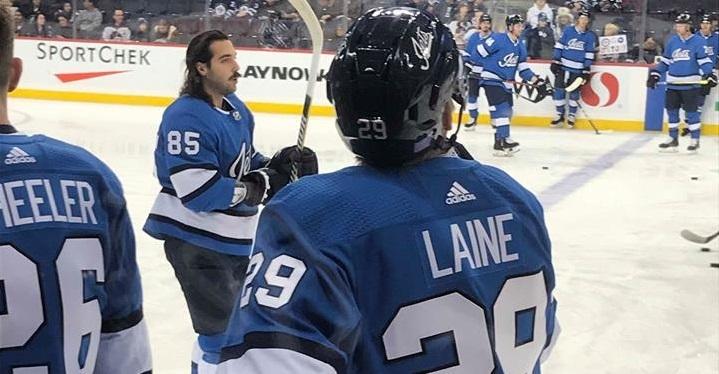On Tuesday, February 5, it was announced that the Toronto Maple Leafs and centre Auston Matthews had reached an agreement on a five-year contract extension worth an annual average value (AAV) of $11.623 million.
The extension, which kicks in at the start of next season, will make Matthews the second-highest paid player in hockey, $900,000 behind McDavid, whose own lucrative extension began this season, worth an AAV of $12.5 million.
With that out of the way, I don’t want to waste any more of your valuable time talking about the Leafs. You already have TSN for that!
By now, we all know that Laine and Matthews will be forever linked thanks to their draft positions. The “who’s better” debate will continue to rage on between Jets and Leafs fans for years to come.
But the question needs to be asked: what does the Auston Matthews contract mean for the Jets and Patrik Laine?
This news couldn’t have come at a worse time for Laine. The 20-year-old continues to slump offensively with just one goal in his last 16 games. Laine found himself benched for most of the second period in Boston last week. Since he’s in a contract year, this slump is costing him money.
By my count, this is the third time in the last calendar year that I’m writing about Laine being in a slump, with the first one coming in the playoffs last season. Granted, he still put up five goals in 17 playoff games, but he just didn’t look like himself after that first round.
The second struggle came at the beginning of this season, when he struggled to score at even strength in the opening month. Then he exploded for 18 goals in November, including a five-goal performance against the Blues. In the 32 games since, though, Laine has managed just six goals.
Let’s not forget he’s still just a kid. Even with two and a half seasons under his belt, and one deep playoff run, there’s still a lot for Laine to learn. If we’re being honest, he could go on to score 14 goals in the playoffs this year and everything I’m about to write, and which others have long been writing, will be nullified. As Laine grows as a player, he’ll hopefully find a way to build consistency and adjust to how other teams defend against him.
Now, to get back to the question at hand, the thing I find most interesting about the Matthews deal, as it pertains to Laine and the Jets, is its length. Most young players coming off their entry contracts opt for the long-term seven-year deals. But the Leafs ultimately went down to five years, in order to save money; it was reported that Matthews was asking for an AAV north of $13 million for a seven-year deal.
Could we see the Jets and Laine do the same thing?
First things first—no one should expect Laine to see Matthews-type money. Matthews is a centre, which already makes him eligible for a bigger payday, not to mention he can create more scoring opportunities on his own than Laine can. Laine relies heavily on his teammates to get him the puck. But make no mistake: once Laine does get it, he’s one of the best there is at finding the back of the net.
The only issue I see with the Jets following suit and taking a couple of years off a deal with Laine is that it could cost them in the future. I’m not privy to any inside information, and I don’t know what the money disparity would be between a five- and seven-year deal, but I can’t imagine it’s high enough to trump the value of having Laine for those extra two years.
Who knows what kind of goal-scorer he’ll be by the end of that deal? Then again, the Jets will be a much different team, too. After all, the current deals with Little and Wheeler will have ended the year prior.
That being said, with Kyle Connor also set to be a restricted free agent at the end of this season, the Jets should do whatever it takes to make sure they start the next season with both of them in their starting line-up—even if that means signing Laine to a shorter-term deal.


